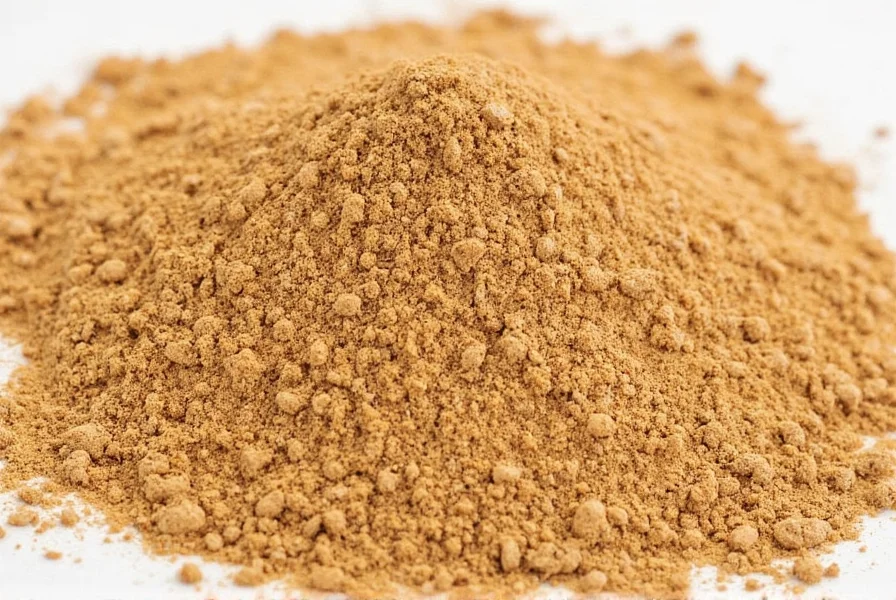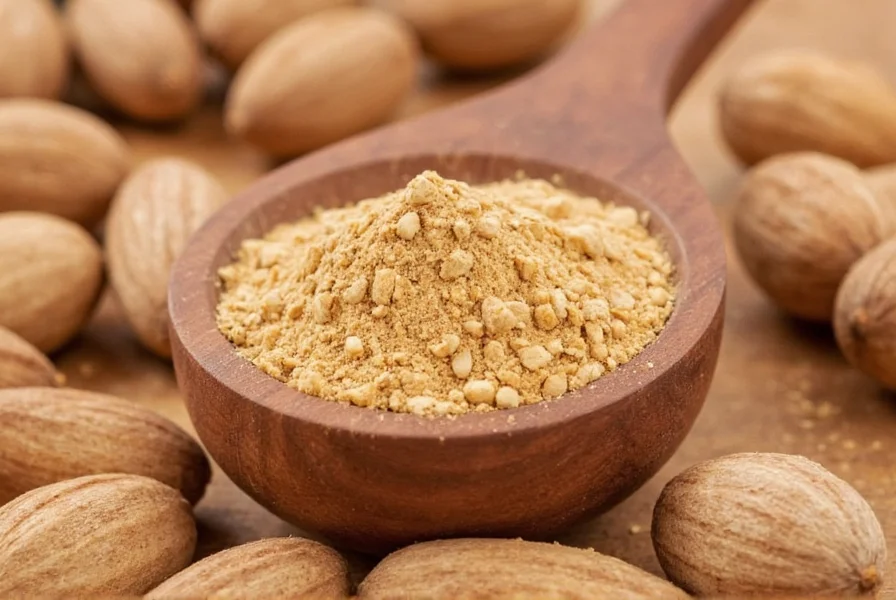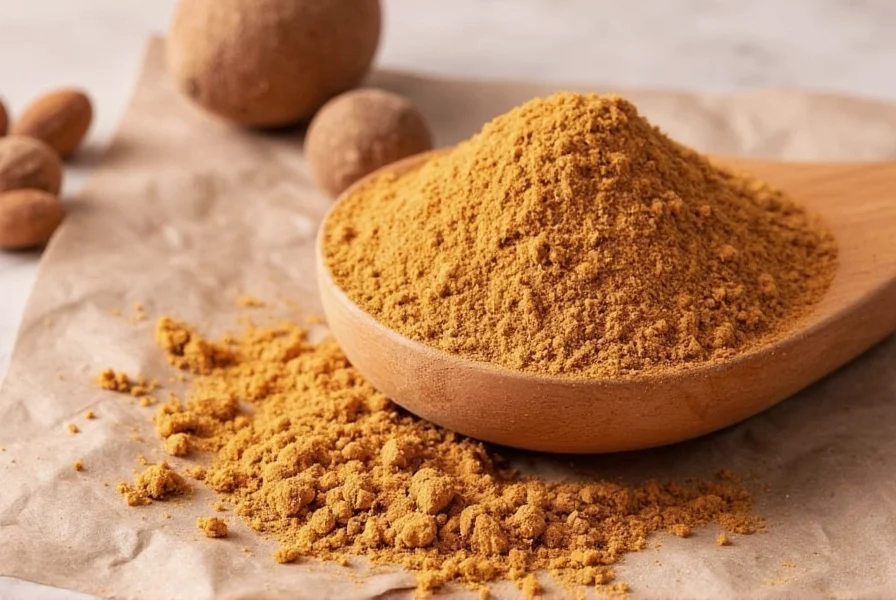Nutmeg powder transforms culinary creations with its distinctive warm, sweet, and slightly nutty flavor profile. This versatile spice, derived from the seed of the Myristica fragrans evergreen tree, has been prized in kitchens across Europe, Asia, and the Americas for centuries. Unlike many spices that lose potency quickly, properly stored nutmeg powder maintains its aromatic compounds for extended periods, making it a reliable pantry staple for both professional chefs and home cooks.
What Exactly Is Nutmeg Powder?
Nutmeg powder consists of dried nutmeg seeds that have been finely ground into a consistent powder. The nutmeg tree produces two valuable spices: the seed becomes nutmeg powder, while the lacy red covering (aril) surrounding the seed is dried to create mace. Though related, these spices have distinct flavor profiles—nutmeg offers warm sweetness while mace provides more delicate, floral notes.

How Nutmeg Powder Is Made
The production process begins when ripe nutmeg fruits fall from the tree. Harvesters collect the fruits, remove the outer fleshy layer, and separate the seed with its mace covering. After drying for several weeks, the mace is removed and processed separately. The nutmeg seeds then undergo further drying until they rattle inside their shells. Artisans carefully crack the shells to extract the seeds, which are then either sold whole or ground into the fine powder found in spice racks worldwide.
Flavor Profile and Culinary Applications
Nutmeg powder delivers complex flavor notes that enhance both sweet and savory preparations. Its warm, slightly sweet character with hints of clove and pine makes it indispensable in certain recipes. Professional chefs often note that how to use nutmeg powder in baking requires careful measurement, as its potent flavor can easily overwhelm delicate desserts.
| Cuisine Type | Common Uses for Nutmeg Powder | Recommended Quantity |
|---|---|---|
| European | Bechamel sauce, potato dishes, meatloaf | 1/8-1/4 tsp per serving |
| American | Pumpkin pie, eggnog, apple desserts | 1/4 tsp per recipe |
| Indian | Garam masala, certain biryanis, milk-based sweets | Pinch to 1/8 tsp per dish |
| Middle Eastern | Lamb dishes, rice pilafs, spiced teas | 1/8 tsp per serving |
Nutmeg Powder vs. Whole Nutmeg: Key Differences
Understanding the difference between nutmeg powder and whole nutmeg significantly impacts cooking results. Whole nutmeg retains its essential oils and aromatic compounds far longer than pre-ground powder. When freshly grated, whole nutmeg delivers noticeably brighter, more complex flavor. The powder form offers convenience but loses potency more rapidly. Serious cooks often keep a small whole nutmeg and microplane grater in their kitchen for recipes where nutmeg plays a starring role.
Proper Storage Techniques for Maximum Freshness
To extend the shelf life of nutmeg powder, store it in an airtight container away from heat, light, and moisture. The best way to store nutmeg powder involves using dark glass or opaque containers in a cool, dry pantry location. Properly stored, nutmeg powder maintains acceptable flavor for 1-2 years, though peak quality occurs within the first 6-12 months. For longest shelf life, consider storing small quantities in the freezer.
Evidence-Based Health Benefits and Nutritional Profile
Nutmeg powder contains several beneficial compounds, including myristicin, elemicin, and safrole, which contribute to its nutmeg powder health benefits. Research suggests potential anti-inflammatory and antioxidant properties. One teaspoon (2.2g) of nutmeg powder provides approximately:
- 12 calories
- 1g dietary fiber
- Significant manganese (20% of daily value)
- Moderate copper and magnesium
- Trace amounts of iron and calcium
Potential Risks and Safe Consumption Guidelines
While culinary amounts of nutmeg powder are safe, excessive consumption can cause adverse effects due to myristicin content. The nutmeg powder side effects from consuming more than 1-2 teaspoons may include dizziness, rapid heartbeat, and nausea. Never use nutmeg powder medicinally without professional guidance. Pregnant women should consume nutmeg in normal food amounts only, avoiding medicinal doses.
Practical Cooking Tips and Usage Recommendations
For optimal flavor integration, add nutmeg powder early in the cooking process for savory dishes, allowing its flavors to meld with other ingredients. In baking, incorporate it with dry ingredients for even distribution. When cooking with nutmeg powder in Indian recipes, use sparingly as part of spice blends rather than as a dominant flavor. Remember that a little goes a long way—start with smaller amounts and adjust to taste.
Common Substitutions When Nutmeg Powder Is Unavailable
If you need nutmeg powder substitutes, consider these alternatives:
- Mace powder (use 3/4 the amount of nutmeg called for)
- Pumpkin pie spice (use half the amount, as it contains nutmeg plus other spices)
- Allspice (use 1/2 to 2/3 the amount)
- Garam masala (for Indian dishes, use 1/2 the amount)
None perfectly replicate nutmeg's unique flavor, but these options work in a pinch. For the most authentic results, seek out whole nutmeg and freshly grate it when possible.

Frequently Asked Questions
How long does nutmeg powder stay fresh?
Properly stored in an airtight container away from light and heat, nutmeg powder maintains good quality for 1-2 years. For optimal flavor, use within 6-12 months of purchase. The how long does nutmeg powder last question depends significantly on storage conditions—exposure to air, light, or moisture accelerates flavor degradation.
Can nutmeg powder make you sick?
In normal culinary amounts (up to 1/4 teaspoon per serving), nutmeg powder is safe for consumption. However, consuming more than 1-2 teaspoons at once may cause nutmeg poisoning with symptoms including dizziness, nausea, rapid heartbeat, and hallucinations. These nutmeg powder side effects result from myristicin toxicity and typically resolve within 24-48 hours.
Is nutmeg powder the same as mace?
No, nutmeg powder and mace are different spices from the same fruit. Nutmeg comes from the seed, while mace is the lacy red covering (aril) surrounding the seed. Mace has a more delicate, floral flavor compared to nutmeg's warm, sweet profile. Though related, they're not interchangeable in recipes requiring specific flavor profiles.
What are the best dishes for using nutmeg powder?
Nutmeg powder excels in creamy sauces (especially béchamel), root vegetable dishes, winter squash preparations, apple-based desserts, and warm beverages like eggnog. It's essential in certain cheese dishes, potato preparations, and some meatloaf recipes. When exploring how to use nutmeg powder in baking, it works particularly well in pumpkin pie, gingerbread, and spiced cakes.
Can I substitute whole nutmeg for nutmeg powder?
Yes, you can substitute whole nutmeg for powder using a 1:1 ratio by volume. However, freshly grated whole nutmeg delivers significantly more vibrant flavor than pre-ground powder. For best results when making this substitution, use a fine grater and add the freshly grated nutmeg toward the end of cooking to preserve its volatile aromatic compounds.











 浙公网安备
33010002000092号
浙公网安备
33010002000092号 浙B2-20120091-4
浙B2-20120091-4